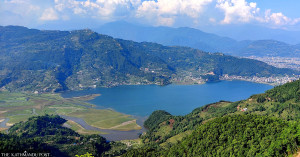Money
Over 35 percent industries in six districts
Nepal’s manufacturing establishments are mainly concentrated in six districts: Rupandehi, Kathmandu, Morang, Sunsari, Parsa and Bara
Sanjeev Giri
These six districts, with more than 200 industries each, house over 35 percent of the total number of industries in the country.
The census throws some interesting facts, with Rupandehi outnumbering the traditional manufacturing hubs of Parsa, Sunsari, Morang, Bara and Kathmandu in terms of the number of manufacturing units.
Rupandehi has a total of 320 industries, followed by Kathmandu (318). Morang, Sunsari, Parsa and Bara have more than 200 industries each. Pashupati Murarka, senior vice-president of the Federation of Nepalese Chambers of Commerce and Industries (FNCCI), said a relatively peaceful environment to do business compared to other industrial hubs like Birjung and Biratnagar has helped attract investors in Rupandehi. “The district’s proximity with the Indian city Gorakhpur and relatively cheaper land price too has prompted investors to put money there,” he said.
The number of industries increased by 630 to reach 4,046 units compared to the last census of 2006-07. However, the number of districts having manufacturing units has come down to 64 from 67. According to the census, 23 districts accounted for 88 percent of the industries in the country. The report has stated despite a relatively stable political situation, the number of industries grew by just 18 percent since the last census. Murarka said such a slow growth rate was not a good indication for the economy. “A lot can be achieved in such a long time.”
National Planning Commission (NPC) Vice-chairman Govinda Raj Pokharel said the report would help identify the core areas to focus in the upcoming plan. “The census has provided a strong base for the NPC to make necessary plans for country’s industrial sector through the next plan,” he said at a programme to release the report on Wednesday.
According to the census, the number of employees in industries increased 15 percent to 204,360. These industrial units spend a total of Rs 16.44 billion in salaries to employees. The average monthly expenditure on a worker stood at Rs 7,026. The value of input such as labour, capital, material, energy and industrial services stood at Rs 242 billion, while the value of output stood at Rs 323 billion. The industries have fixed capital worth Rs 119 billion, while added fixed assets worth Rs 6 billion since the last census of 2006-07.
The report has pointed out energy shortages as the major factor hindering industrial growth. As per the report, 87 percent of the industries reported they were facing negative impacts of load-shedding.
Similarly, 37 percent of them identified unavailability of raw materials as a major problem, while 37 percent saw the unavailability of skilled manpower as barrier to growth.
Labour-related issues, which used to top among the factors hindering the industrial sector, was not the top most issue for industrialist. Only 22 percent of the respondents termed labour issue as a major problem.
According to the census, around 41 percent industries said they were not able to produce products as per the demand, while 45 percent said they could not meet the demand due to power outage, and 22 percent said they failed to produce goods as per the demand due to the unavailability of raw materials.




 24.92°C Kathmandu
24.92°C Kathmandu














